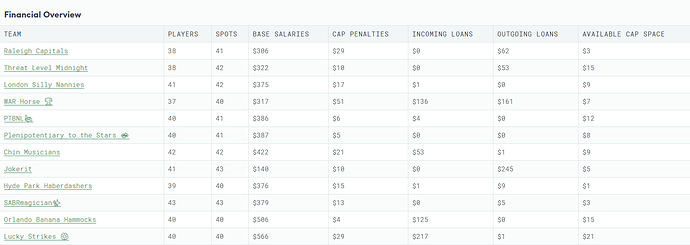For years I have been against the notion of limiting loans because I believe it actually hampers teams from rebuilding they way they want to. If teams want to cash in high priced players early in the season because they don’t project to compete (rightly or wrongly), don’t limit their ability to do so. Overall, smart owners are better for a league than competitive mechanisms.
That said, I’ve been warming this year to the idea of a scaling loan limit that would not fully eliminate loans but gradually allow greater loans throughout the season, by month. I believe this was originally an idea by @hernandez17 but it’s essentially a hybrid of no loans and loan caps.
As an example, in @Brinksmanship we have an excellent league full of very savvy, experienced owners. They can build and rebuild any way they like and for the most part we just let it happen because we all respect each other. However, as of 4/30, I now have $217 in in-coming salary YTD, and I still have the attractive, cheaper pieces I’d need to buy another ~$100 in expensive players if I wanted to go all, all in on the 2019 season.
I can argue that it was a combination of skill, luck, and good planning that allowed me amass the young, cheap, attractive building block pieces needed to acquire so much value via loan, and that my leaguemates know that I can sustain long-term success only so long if I keep cashing in those chips in a single season, but I’ll be honest: a part of me feels a bit dirty “buying” a real shot at the championship this early in the season (and this league also contains coupons and MiLB incentives that push against these types of sell offs).
A gradual loan limit system would essentially limit the total amount of incoming loans a team can acquire each month throughout the season. As an example only:
April MTD: $25 total
May MTD: $50 total
June MTD: $100 total
July MTD: $175 total
August MTD: $275 total
This type of system would still allow rebuilding teams to sell off pieces, but would slow that process down for the entire league. It would force more creative trade proposals to stay under the total cap without completely altering the standard format of the game.
I’m sure there are other ways to do this, and this concept has been argued for and against for years, but this seems to be one of the better, simpler ideas I’ve seen. I think it may help prevent new owners from being taken advantage of early in the season, too.
Curious what the @Community discussion looks like on this topic.
